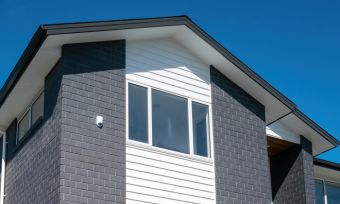Kiwis love to renovate, and it’s not hard to see the motivation behind it. A good renovation can transform a home and create substantial profits. Plan and spend your dollars wisely and you’ll take full reap the benefits.
Depending on your personal situation and the renovation you have in mind, here are some of the financing options that may be available to you:
1. Offset, Redraw or Savings: Pay out of your own pocket
Using your own funds to finance a renovation can be more straightforward and less financially risky than borrowing money. For example, you could use any of the following for pay for a renovation:
- Personal savings
- Investments that you can cash in
- Money built up in your home loan’s offset or redraw facility
Typically, using your own money means you’ll be free to sit back and enjoy the fruits of your renovation labour, without having to worry about loans and interest rates.
A mortgage offset account, or redraw facility, allows a homeowner to put money into their home loan, or an account linked to it (over and above home loan repayments) to help reduce the amount of interest payable on their mortgage. The extra funds can, typically, be accessed by the homeowner when needed, according to the lender’s conditions.
However, there are a couple of points worth keeping in mind:
- If you’re considering accessing money via an offset or redraw facility, you may want to check the effect this could have on your loan in the long run.
- Money saved in an offset facility reduces the interest you’re liable to pay on top of the loan’s principal. So reducing the amount being offset against your home loan could mean you end up paying more overall. And any time shaved off your loan term by the reduction in interest could be lost.
If you’re planning to use savings to finance your renovations, it may be worth checking that after you’ve withdrawn the amount required for your renovations, you’re still left with an emergency fund. For example, enough cash to deal with any unexpected expenses that could pop up, like an insurance excess or a car service.
2. Refinance your home loan
For a homeowner with enough equity built up in their property, refinancing the loan could be an option. This involves leveraging the equity in the home to top up the mortgage to help fund the renovation.
In this case, the equity is the difference between the value of the home and the amount left on the mortgage. If you want to refinance, you have the option of sticking with your original mortgage lender, or shopping around for a better deal. Note that if you’re breaking your mortgage term to refinance, you could incur a break fee.
If you are able to borrow the money needed for the renovation based on your existing home equity, one course of action could be to increase your loan size and place the renovation funds into a 100% offset account (assuming your home loan has an offset facility). This would, generally speaking, prevent you from having to pay any interest on the additional amount until you use it.
Another option could be a line of credit mortgage, which is designed to let you access funds as you need them, and charges interest on the balance owing on your account.
In many respects, refinancing is a similar commitment and process to taking out a new home loan, so make sure you consider the implications it could have on your wider finances. And, if you do decide to refinance, shop around for a competitive product.
Compare home loan rates for free with Canstar!
3. Apply for a construction loan
If you’re embarking on a large renovation project, such as an extension or a knock down and rebuild, you could consider a construction loan. A construction loan is, typically, based on the estimated final (post-renovation) value of your property, and allows you to drawn down funds to pay for work as it’s completed.
Often, during the building phase, the interest on a construction loan is set at a floating rate. It then switches to a lower, fixed rate on the home’s completion.
4. Take out a personal loan
A personal loan is another option for funding a renovation. Personal loans typically allow you to borrow up to around $50,000 (some lenders may have higher limits). And, generally, they come in two forms: secured or unsecured. Interest rates vary widely, depending on the loan product and lender, the loan term and your credit history.
Secured loans are, generally speaking, cheaper than unsecured loans, and can be secured against assets such as vehicles and property.
It’s worth bearing in mind that an interest rate that could be considered low for a personal loan product would still be relatively high when compared against a similarly competitive home loan interest rate.
5. Other options
If your renovation is likely to involve smaller, more regular expenses, some other types of finance may be appropriate. For example, you could consider using a credit card or an overdraft facility.
Note that these options usually come with higher interest rates and fees than other types of finance, so may not be suitable for all renovations, particularly if you think you might not be able to repay the funds quickly.
Whether you’re planning to give your house a new coat of paint, a full kitchen makeover or install a new bathroom, it’s key to plan your budget and gain an understanding of the costs you can expect. Once you’ve done that, explore the options of financing your renovation thoroughly.
Considering taking out a personal loan? Start by comparing your options with Canstar, which you can do by clicking the button below.
Compare personal loans with Canstar
About the author of this page
This report was written by Canstar Content Producer, Caitlin Bingham. Caitlin is an experienced writer whose passion for creativity led her to study communication and journalism. She began her career freelancing as a content writer, before joining the Canstar team.
Enjoy reading this article?
You can like us on Facebook and get social, or sign up to receive more news like this straight to your inbox.
By subscribing you agree to the Canstar Privacy Policy





Share this article